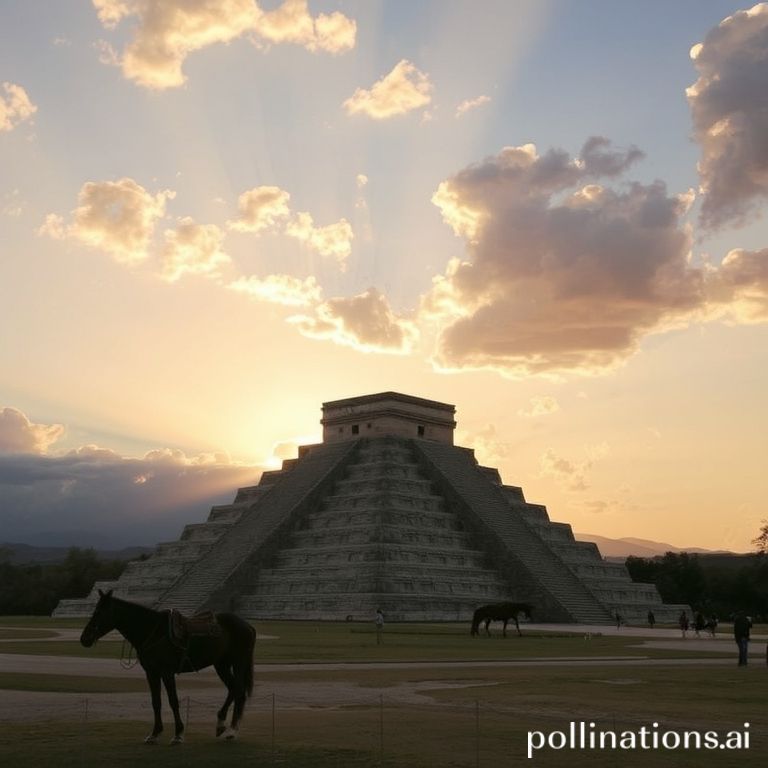The ancient pyramids of Mexico stand as silent witnesses to history, their imposing structures drawing visitors from around the globe. While these magnificent sites are captivating at any time of day, there’s a particular moment when their beauty is amplified – the golden hour. This brief period after sunrise and before sunset bathes the landscape in a warm, ethereal light, creating an unforgettable experience and the perfect conditions for stunning photographs. Planning your visit around the golden hour will not only enhance your appreciation of these historical wonders but also allow you to capture breathtaking images that will last a lifetime.
But what exactly makes the golden hour so special for photography at the pyramids, and how can you make the most of this magical time? Let’s delve into the details of planning your visit to capture the perfect shot and create memories that will shine as brightly as the golden light itself.
Why Golden Hour is Perfect for Pyramid Photography
The golden hour, as the name suggests, is a period characterized by soft, warm light. This occurs because the sun is low on the horizon, and the light has to travel through more of the atmosphere, scattering away blue light and leaving behind the warmer hues of red, orange, and yellow. This creates a flattering, diffused light that minimizes harsh shadows and enhances textures. Here’s why it’s ideal for photographing the pyramids:
- Soft, diffused light: Avoids harsh shadows and glare, which can obscure details and make for unflattering photos.
- Warm color tones: Enhances the natural colors of the stone and surrounding landscape, creating a visually appealing aesthetic.
- Long shadows: Adds depth and dimension to your photographs, highlighting the scale and grandeur of the pyramids.
- Creates a magical atmosphere: The soft, warm light evokes a sense of wonder and timelessness, perfectly complementing the historical significance of the site.
Planning Your Golden Hour Visit
Timing is everything when it comes to capturing the golden hour. Here’s how to plan your visit to coincide with this magical period:
Check Sunrise and Sunset Times
The most crucial step is to determine the exact sunrise and sunset times for the day you plan to visit. You can easily find this information online using a weather app or website that provides sunrise and sunset data for your specific location. Be sure to search for the times specific to the location of the pyramids you plan to visit, as these times can vary slightly based on geographic location.
Arrive Early
Don’t arrive *exactly* at sunrise or sunset. Aim to arrive at least 30-60 minutes before the predicted golden hour. This gives you ample time to find the perfect vantage point, set up your equipment, and experiment with different compositions. Arriving early also allows you to soak in the atmosphere and appreciate the changing light as it gradually transforms the landscape.
Consider the Season
The length and quality of the golden hour can vary depending on the time of year. During the summer months, the golden hour tends to be longer and the light more intense. In the winter months, the golden hour is shorter and the light softer. Keep this in mind when planning your visit and adjusting your shooting schedule.
Best Locations for Golden Hour Photos at the Pyramids
Many locations around the pyramids offer fantastic vantage points for capturing stunning golden hour photos. Here are a few suggestions:
- The Avenue of the Dead (Teotihuacan): Offers a long, linear perspective of the pyramids, allowing you to capture their imposing size and grandeur against the colorful sky.
- The top of the Pyramid of the Sun (Teotihuacan): Provides a panoramic view of the entire site, perfect for capturing the vastness of the landscape and the interplay of light and shadow. (Note: Check for any access restrictions before planning to climb).
- The Plaza of the Moon (Teotihuacan): Offers a unique perspective of the Pyramid of the Moon, framed by the surrounding structures.
- Various points around Chichen Itza: Allows you to capture the iconic El Castillo pyramid from different angles, highlighting its intricate details and architectural brilliance.
Tips for Capturing the Perfect Shot
Once you’ve planned your visit and chosen your location, here are a few tips to help you capture the perfect golden hour photo:
- Use a tripod: A tripod is essential for capturing sharp images in low light conditions.
- Shoot in RAW format: This will give you more flexibility when editing your photos.
- Experiment with different angles and compositions: Don’t be afraid to try new things and find your own unique perspective.
- Pay attention to the details: Look for interesting textures, patterns, and details that will add depth to your photos.
- Use a polarizing filter: This can help reduce glare and enhance the colors in your photos.
- Be patient: The golden hour is a fleeting moment, so be patient and wait for the perfect light.
Conclusion
Visiting the pyramids during the golden hour is an experience that transcends mere sightseeing; it’s an immersion into a world where history and natural beauty converge. By timing your visit to coincide with this magical period and utilizing the tips outlined above, you can capture stunning photographs that showcase the pyramids in all their glory. These images will not only serve as cherished mementos of your trip but also as a testament to the timeless allure of these ancient wonders. So, plan your adventure, pack your camera, and prepare to be mesmerized by the golden light illuminating the pyramids of Mexico.
If you enjoyed this article, don’t forget to explore more inspiring stories on Life in Mexico!
IMAGE: A wide-angle shot of the Pyramid of the Sun at Teotihuacan during the golden hour. The sky is filled with warm colors of orange, pink, and yellow. Soft light illuminates the pyramid, highlighting its textures and details. Long shadows stretch across the Avenue of the Dead. A few silhouetted figures of tourists are visible in the foreground, adding a sense of scale. The mood is peaceful and awe-inspiring. Style: Travel photography.


